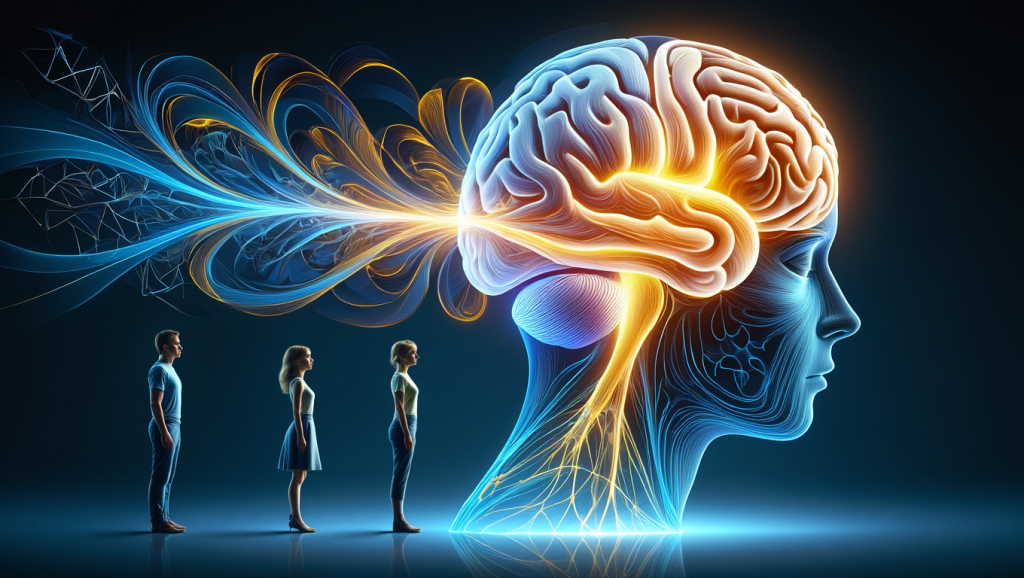Have you ever found yourself daydreaming so deeply that you lost track of time? Or perhaps you’ve experienced that mental state just before falling asleep, where your thoughts flow freely and creatively? If so, you’ve already experienced something remarkably similar to self-hypnosis—a powerful tool for personal transformation that remains widely misunderstood.
Demystifying Self-Hypnosis
Self-hypnosis is not about losing control or surrendering your will to someone else. Rather, it’s a naturally occurring state of focused attention where your mind becomes highly receptive to positive suggestions. It’s a skill that, when mastered, allows you to access your subconscious mind—the powerful mental processing center that drives 95% of your behaviors, habits, and automatic responses.
At its core, self-hypnosis is:
- A form of deep mental relaxation where analytical thinking temporarily steps aside
- A heightened state of suggestibility where new ideas and beliefs can be more easily accepted
- A mental technique for bypassing the “critical faculty” that normally filters new information
- A natural ability we all possess that can be enhanced through practice
The Science Behind Self-Hypnosis
When you enter a hypnotic state, your brainwaves naturally shift. From our normal waking state (beta waves: 14-30 Hz), we transition into alpha (8-14 Hz) and then theta brainwave states (4-8 Hz). This theta state—the same one you experience just before falling asleep or during deep meditation—is where self-hypnosis becomes most effective.
In this relaxed state, the subconscious mind becomes more accessible. Neuroscience has shown that during hypnosis, activity in the brain’s default mode network (areas active when your mind wanders) decreases, while connectivity between areas controlling attention and body awareness increases.
Key Benefits of Self-Hypnosis
Research and countless personal experiences have demonstrated that regular self-hypnosis practice can help:
- Reduce stress, anxiety, and chronic pain
- Break unwanted habits and establish positive new ones
- Enhance performance in sports, academics, or creative pursuits
- Improve sleep quality and overall well-being
- Increase self-confidence and overcome limiting beliefs
- Access deeper levels of creativity and problem-solving
How Self-Hypnosis Works: The Mental Reprogramming Process
Think of your subconscious mind as your brain’s operating system. It runs in the background, constantly processing information and executing mental “programs” you’ve developed throughout your life. Some of these programs (habits, beliefs, emotional responses) may no longer serve you well.
Self-hypnosis allows you to:
- Access the subconscious operating system through relaxation techniques
- Identify outdated mental programming causing unwanted thoughts or behaviors
- Introduce new, positive programming through carefully worded suggestions
- Reinforce these new mental patterns through regular practice
A Simple Self-Hypnosis Method for Beginners
Ready to try self-hypnosis? Here’s a simple 5-step process to get started:
1. Preparation
Find a quiet, comfortable place where you won’t be disturbed for at least 15-20 minutes. Sit or recline in a position that allows you to relax without falling asleep.
2. Progressive Relaxation
Starting with your toes and moving upward, consciously relax each muscle group in your body. Take slow, deep breaths, feeling tension melt away with each exhale.
3. Deepening
Count backward slowly from 10 to 1, imagining yourself descending deeper into relaxation with each number. Some people visualize walking down stairs, riding an elevator, or floating down through water.
4. Suggestion Phase
When deeply relaxed, introduce positive suggestions related to your goal. These should be:
- Phrased positively (“I am becoming…” rather than “I will stop…”)
- Present tense, as if already happening
- Specific and emotionally engaging
- Repeated several times
For example: “I am becoming more confident in social situations. Speaking with others feels natural and enjoyable. I express myself clearly and listen attentively.”
5. Return
Count from 1 to 5, gradually becoming more alert with each number. Affirm that you’ll carry the positive effects of this session into your day.
Common Questions About Self-Hypnosis
Can anyone be hypnotized? Yes, though individual susceptibility varies. What many don’t realize is that all hypnosis is ultimately self-hypnosis—even with a hypnotherapist, you’re allowing yourself to enter the state.
Will I lose control? No. During self-hypnosis, you remain aware and in control at all times. You cannot be made to do anything against your values or wishes.
How often should I practice? For best results, practice daily for 15-20 minutes, preferably at the same time each day to establish a routine. Many find that self-hypnosis just before sleep or upon waking works particularly well.
How long until I see results? Some effects, like reduced stress, may be noticeable immediately. For deeper changes, such as modifying long-held beliefs or habits, consistent practice over 3-4 weeks typically produces noticeable results.
Taking Your Practice Further
As you become comfortable with basic self-hypnosis, you can enhance your practice by:
- Recording your own suggestions to listen to during sessions
- Incorporating visualization techniques that engage multiple senses
- Using anchors (physical triggers like touching thumb and forefinger) to quickly access hypnotic states
- Exploring progressive techniques like parts therapy or timeline work
The Journey of Mental Reprogramming
Self-hypnosis isn’t just a technique—it’s a journey of self-discovery and personal evolution. By learning to communicate directly with your subconscious mind, you gain unprecedented ability to update your mental programming and reshape your experience of life from the inside out.
As with any skill, the key is consistent practice. Begin with simple goals, celebrate small wins, and gradually expand your practice as your confidence grows.
Remember, your mind is far more powerful and malleable than most of us realize. Self-hypnosis gives you the tools to harness that power consciously and intentionally, creating lasting positive change.
Ready to begin reprogramming your mind? Start with just 15 minutes today, and take the first step toward becoming the architect of your own mental landscape.
Have you tried self-hypnosis before? Share your experiences in the comments below, or ask any questions you might have about getting started with this powerful mental technique.







